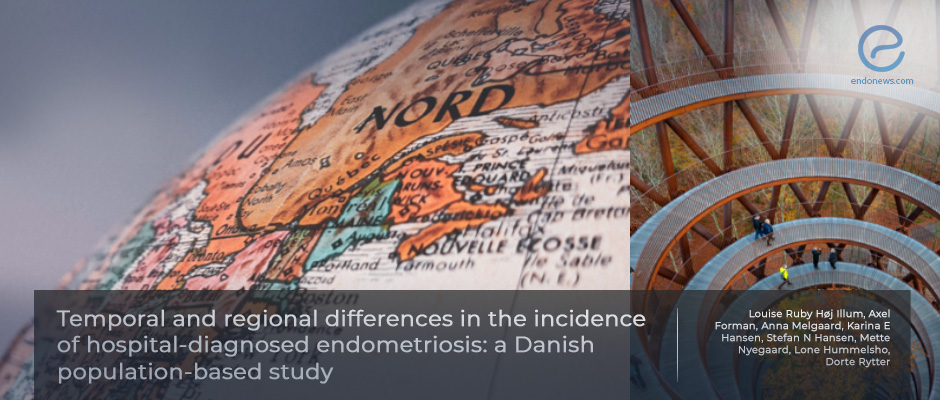How do regional differences affect the incidence rates of endometriosis?
Jul 29, 2022
Regional differences contribute to endometriosis being an underdiagnosed disease in Denmark, study finds
Key Points
Highlight
- Being a multifactorial disease, the incidence of endometriosis diagnosis might be affected by regional factors.
Importance
- Endometriosis remains to be underdiagnosed in many countries.
- The public health and patient organizations have helped in raising awareness.
- The reason for regional differences should be assessed in depth to overcome the underdiagnosis of the disease.
What’s done here
- This is a combined registry-based cohort study and population time trend analysis conducted in Denmark.
- It aimed to explore the regional differences in terms of endometriosis incidence and reasons for underdiagnosis.
- Endometriosis patients aged between 15 to 55 from 1990 to 2017 were retrieved from the national patient registry and the results were analyzed.
Key results
- The prevalence of hospital-diagnosed endometriosis was found to be 1,63% indicating an underdiagnosis of the disease.
- The nationwide incidence rates increased by 46,8% over time.
- The incidence rates were detected to be higher in the northern part of Jutland.
- There were significant regional differences even when adjusted for sociodemographic factors and histologically verified diagnoses.
Strengths and Limitations
- The strengths include the study having the registry-based platform, with a large nationwide cohort and almost complete follow-up, the adjustment for various sociodemographic variables in the regression analysis, and the results being strengthened by the analysis based solely on histologically verified diagnoses.
- The main limitation is the lack of information on diagnoses made outside of hospital settings and the uneven distribution of private gynecologists in Denmark.
Lay Summary
Despite all the ongoing work for endometriosis awareness, it continues to be an underdiagnosed disease. Several different factors are responsible for this. The variations of its symptomatology play a big part as well as the lack of understanding of the symptoms by the clinicians. Another thing that contributes to this is the insufficiency in describing the abnormal pain felt by the patients.
Public health and patient organizations have been developed in many areas, however, geographical, cultural, and socioeconomic factors seem to be affecting the diagnostic period. In a combined registry-based cohort study and population time trend analysis, researchers from Denmark aimed to evaluate the regional and temporal differences in the incidence and the degree of underdiagnosis of endometriosis. The study was published in the July 2022 issue of the journal Acta Obstetricia et Gynecologica Scandinavica.
The study population included all women living in Denmark, aged between 15-55, and who had a hospital-based diagnosis of endometriosis between the years 1990-2017. Data on demographic characteristics, educational level, socioeconomic status, and residential information were gathered and the results were statistically analyzed.
The nationwide incidence rates increased by 46,8% over time from around 5,4 to 8. In the northern parts of Jutland, the incidence rates were detected to be higher and the women living there had the highest probability of receiving a hospital-based diagnosis. The results showed significant regional differences even when adjusted for sociodemographic factors and histologically verified diagnoses. The prevalence of hospital-diagnosed endometriosis was found to be 1,63% which was interpreted as low by the authors when compared to the fact that the general incidence of endometriosis is known to be around 10%. This suggests Denmark has a large number of underdiagnoses of endometriosis.
The authors also state that the highest incidence rates were detected around the referral centers and declare that regional differences might be explained by different genetic, environmental, and cultural factors. More studies are needed to evaluate the causes and results of these regional differences and their impact on the diagnosis of endometriosis.
Research Source: https://pubmed.ncbi.nlm.nih.gov/35434780/
endometriosis incidence underdiagnosis prevalence

